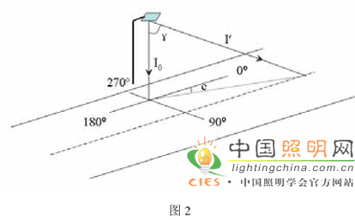As a light source for street lamps, LEDs have many advantages over traditional street light sources. First, the LED is a semiconductor diode that has a very long lifetime. When the luminous flux decays to 80%, its lifetime reaches 25,000 hours. The life of metal halide lamps is 6000~12000 hours, and the life of high pressure sodium lamps is 12000 hours. Second, the basic structure of the LED is an electroluminescent semiconductor material, placed on a leaded shelf, and then sealed with epoxy resin to protect the internal core wire, so the LED has good seismic performance. Third, the light color of white LEDs is better than that of high pressure sodium lamps. At the intermediate visual level, the human eye is more likely to distinguish things in a high color temperature environment than in a low color temperature environment. The color rendering of white LEDs is also much better than that of high pressure sodium lamps. The color rendering index of high pressure sodium lamps is only 20 right and left, while white LEDs can reach 65 to 80. Fourth, the LED can achieve a perfect dimming function. Since the working range of the LED is large, its light output is proportional to the operating current, so the current can be reduced by dimming. In addition, since the LED is not frequently damaged by frequent switching, the dimming of the LED can also be obtained by the pulse width adjustment method, and the luminous intensity of the LED can be effectively adjusted by adjusting the duty ratio of the voltage and the operating frequency. Fifth, in the optical system of the luminaire, the luminous flux loss of the LED light source is minimal. Unlike traditional light sources, LEDs are half-space light sources. A high-pressure sodium lamp or a metal halide lamp is a light source that emits light in a full space, and it is necessary to change the outgoing light of one half space into the other half space by changing the direction of 180°. When we rely on the reflector to complete, the absorption of light by the reflector and the blocking of the light source itself are unavoidable. With LEDs as the light source, there is no such loss, and the utilization of light is higher than that of conventional light sources. Finally, LED light sources do not contain harmful metallic mercury, unlike high-pressure sodium lamps or metal halide lamps that are hazardous to the environment at the time of disposal.
When the night comes, you drive on the road, and the street lamp will accompany you faithfully, so that you can go home safely. The visual comfort that the street light brings to you first comes from the uniform brightness of the road surface, and then people or things on both sides of the road can also be seen, so that you can understand the situation that may be sudden. When the illumination of the street lamp meets the above requirements, its light distribution must be reasonable. Therefore, if you use LED street light, although it has the advantages of good light color, long life, dimming function, etc., its light distribution level is still crucial. At present, LED street lights have just started and need to be constantly improved. Whether it is the optical structure design of street lamps or heat dissipation technology, it is still being improved.
The LED street light is different from the optical design using conventional light source street lights. Conventional light source street lamps use a reflector to evenly distribute the luminous flux of a light source onto an illuminated road surface. The LED street light source consists of a very large number of LEDs. By designing the projection direction of each LED, the illuminated road surface is evenly illuminated.
At present, the application prospects of LED street lamps on secondary trunk roads and branch roads are very good. The secondary trunk road is a road that combines with the main road to form a road network and acts as a gathering and distributing traffic. The illuminance requirement of the secondary trunk road is 15lx, the illumination uniformity is 0.4, the average brightness requirement is 1.0cd/m2, the total brightness uniformity is 0.4, the brightness longitudinal uniformity is 0.5, and the threshold increment is ≤10. LED street lights that meet the energy-saving level, the lighting power density should be less than the national standard when the lighting quality meets the above requirements. When the number of lanes is ≥ 4, the lighting power density is ≤ 0.70, and when the number of lanes is < 4, the lighting power density ≤ 0.85. In order to meet the above requirements, the light distribution shape of LED street lamps should have strict requirements. In the longitudinal direction of the road, the beam should be projected farther away, increasing the spacing of the luminaires. Below the street light, the light intensity should be minimal, and as the elevation angle γ increases, the light intensity I' increases. When I' and γ satisfy a certain functional relationship, the road surface can obtain uniform illumination. The relationship of this function is as follows:

Of course, due to the complexity of the optical design, the light distribution shape is difficult to fully conform to this functional relationship, and the projection range of the gamma angle can be reduced, and the lamp spacing can be reduced to obtain uniform illumination. In the longitudinal direction of the road, the projection direction of the maximum light intensity should be at an angle c to the longitudinal line of the road. The angle c is determined by the width of the road, as shown in Fig. 2. In the direction perpendicular to the road, the shape of the light distribution curve of the street lamp can also be designed according to this function relationship. The range of the γ angle is determined by the width of the road (c=90o) and the position of the sidewalk (c=270o), as shown in Fig. 3.
